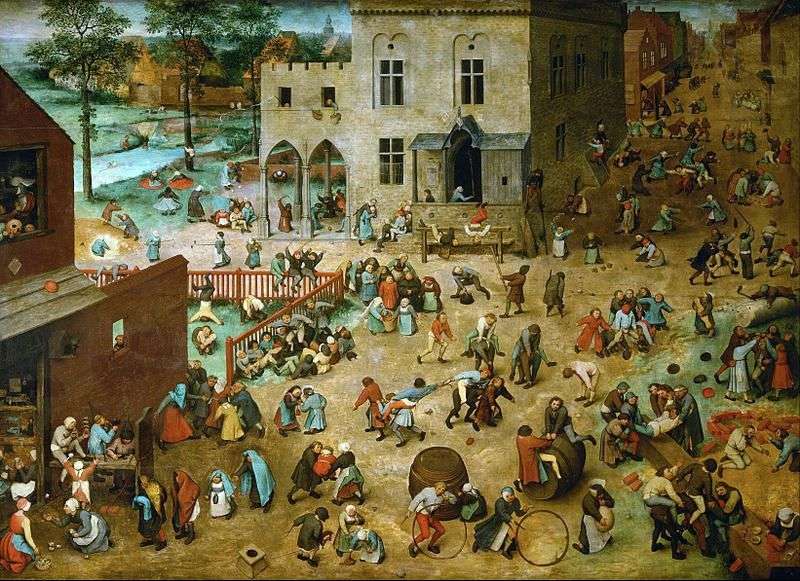
In this picture, the action also takes place in the city. In front of us are the town houses and a long straight street that goes into the distance. But the city suddenly abruptly cuts off, and the street takes us straight to the river. To a typical Dutch house in the center of the picture is a light loggia, reminiscent of southern, Italian architecture.
The picture is filled with small figures of people, similar to puppet dolls. Bright, colorful spots of their clothes create the impression of flickering, rapid movement. But among these people there is not one adult. There are a lot of children playing various games: they spin up tops, drive a hoop, play leapfrog, roll on a barrel, stand on their heads. And it seems that there is no game in the world that the artist would not show here.
Why did Bruegel need it so accurately, so carefully depict this world of children’s games? And why the picture does not seem happy and cheerful at all?
Long ago people noticed that there is a great similarity between the life of man and the cycle of nature: just as nature revives in the spring, blooms in the summer, fades in autumn and falls asleep in winter, so a person lives his life from childhood to old age.
In the picture, Bruegel depicted the summer – dressed in green trees, the children sit on the bank of the river, bathe. And among the games we notice such: in the room on the left, girls play in their mother’s daughters, in the center – a game in the wedding. Children play with an adult seriousness. “The world and everything that belongs to him is just a child’s play,” wrote the Dutch poet of the 17th century, Jacob Kats.
Look at how much in the picture of evil games, in which they deceive each other, offend the weak. Bruegel shows in the picture many negative properties of man.
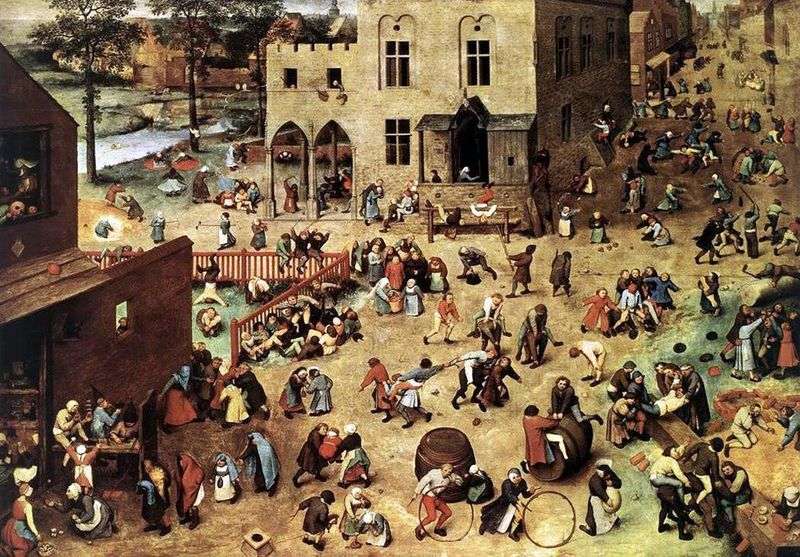 Children’s Games by Peter Brueghel
Children’s Games by Peter Brueghel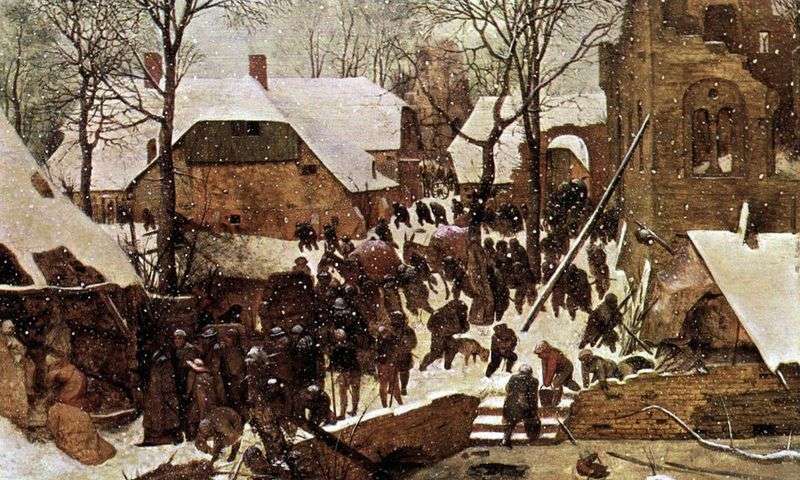 The Adoration of the Magi in the Winter Landscape by Peter Brueghel
The Adoration of the Magi in the Winter Landscape by Peter Brueghel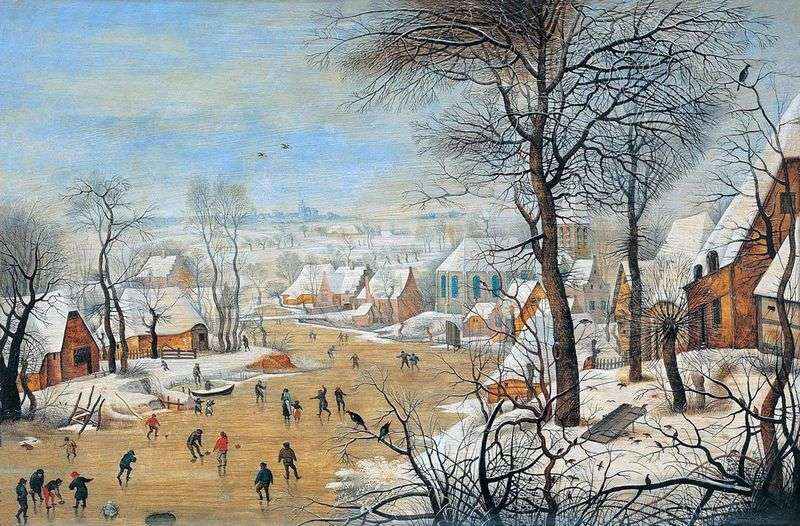 Landscape with skaters and a trap for birds by Peter Brueghel
Landscape with skaters and a trap for birds by Peter Brueghel The Parable of the Sower by Peter Brueghel
The Parable of the Sower by Peter Brueghel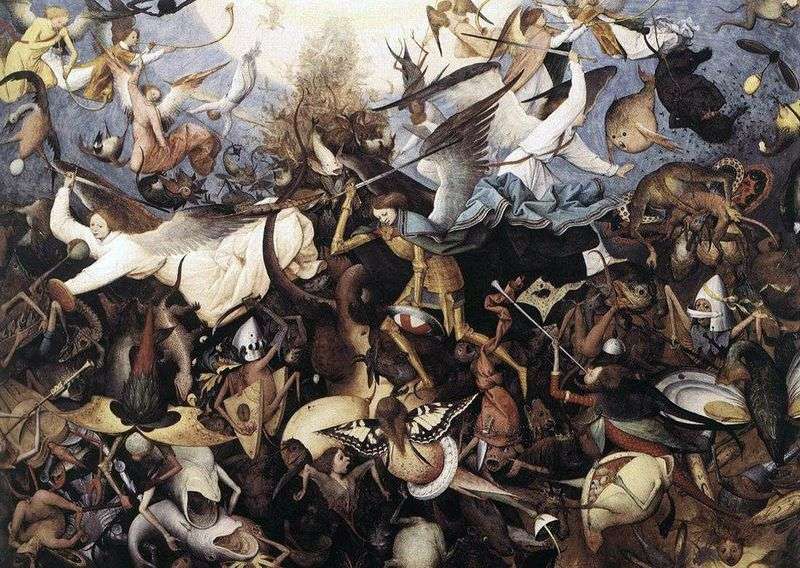 The Fall of the Rebellious Angels by Peter Brueghel
The Fall of the Rebellious Angels by Peter Brueghel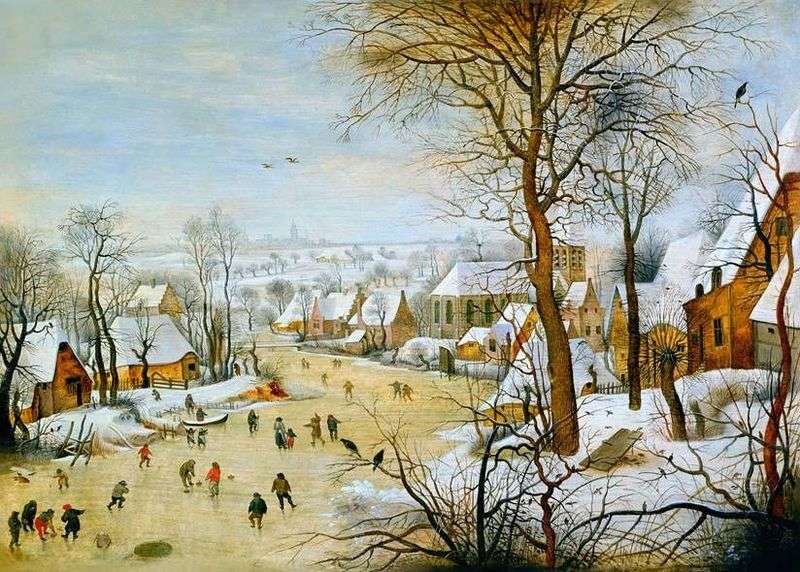 The Bird Trap by Peter Brueghel
The Bird Trap by Peter Brueghel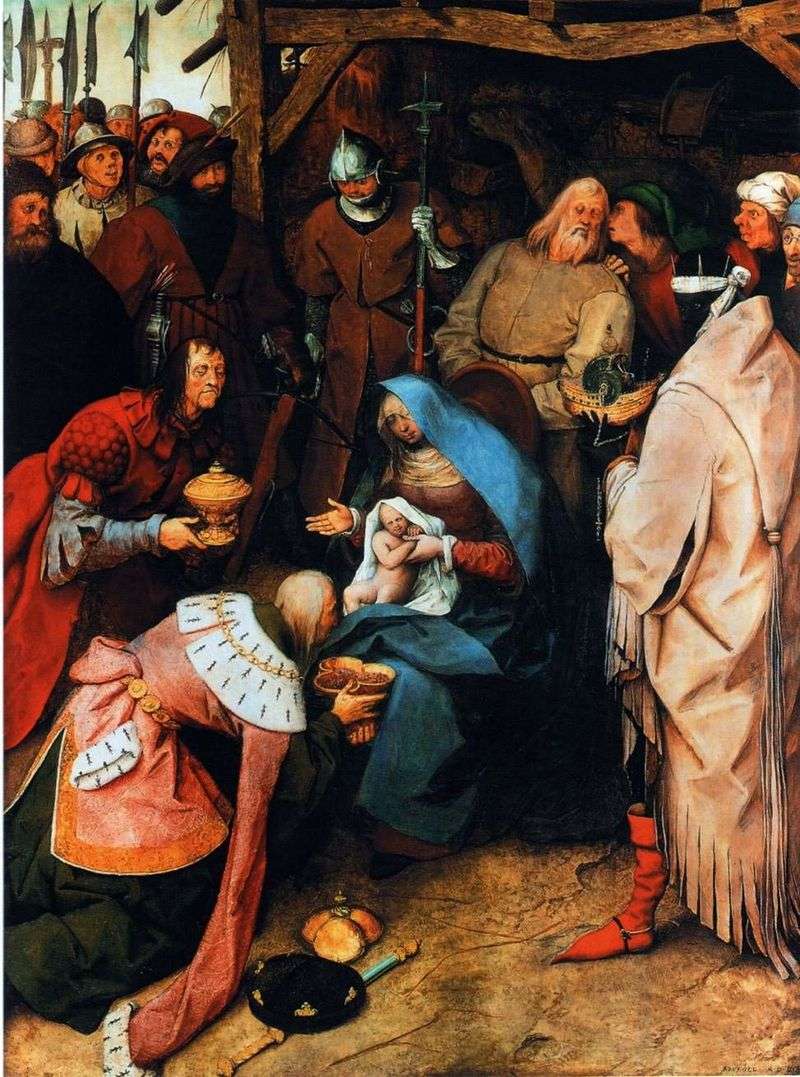 Adoration of the Magi by Peter Brueghel
Adoration of the Magi by Peter Brueghel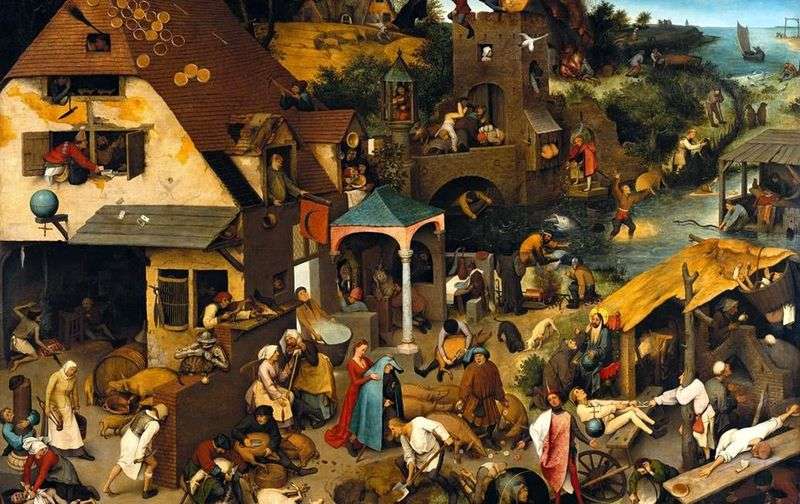 Dutch proverbs by Peter Brueghel
Dutch proverbs by Peter Brueghel